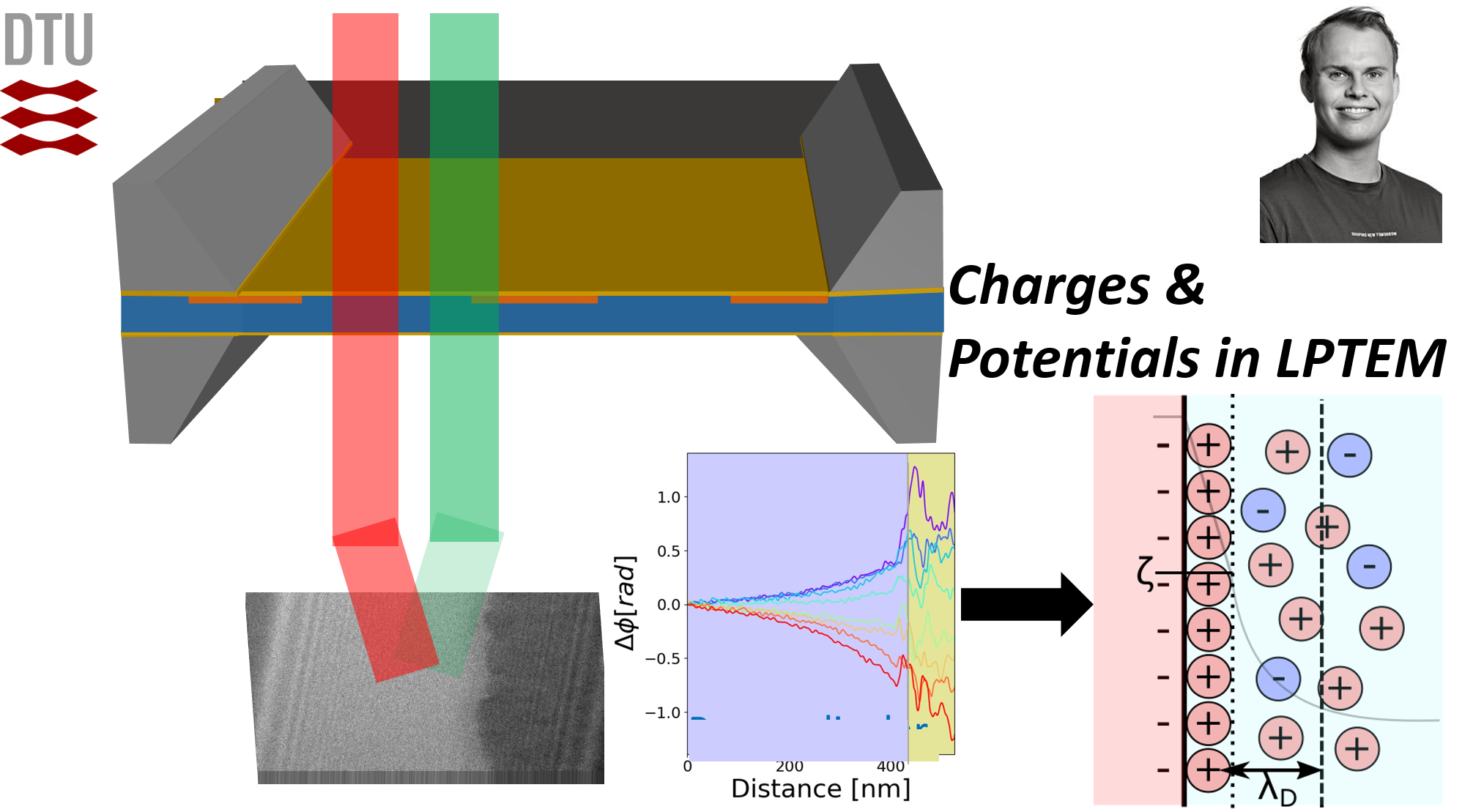Time and place: 13:00, bldg. 308, aud. 12, DTU Lyngby Campus.
Principal supervisor: Professor Kristian Speranza Mølhave
Co-supervisor: Associate Professor Marco Beleggia
Co-supervisor: Assistant Professor Murat Nulati Yesibolati
Examiners
Professor Thomas Willum Hansen, DTU Nanolab, Chairman
Researcher Andras Kovacs, Forschungszentrum Jülich GmbH
Principal Scientist Christian Fink Elkjær, Haldor Topsøe
Chairperson at defence
Professor Jakob Birkedal Wagner
Abstract
Liquid phase transmission electron microscopy (LPTEM) has enabled us to visualize processes in liquids on nanoscale.
In this thesis, I will explore combining LPTEM with another TEM method, electron holography (EH), which allows us to measure electrostatic potentials formed by a specimen, biased or not. An unbiased specimen will give us information about the mean inner potential (MIP) of the material. When the MIP is accounted for, EH can be used to retrieve information about the electrostatic potential of the specimen formed by the applied potential on nanoscale.
Combined, this forms the basis for a new method, which we coin Liquid Phase Transmission Electron Holography (LPTEH).
I will first give a proper foundation of EH and LPTEH and show the method can be used to map out electrostatic potentials and charge densities.
Then I will examine how LPTEH can be used to measure the MIP of liquid mixtures at different MIPs. This allows for direct measurement of liquid composition in the TEM, creating a nanoscale high energetic electron-based version of the traditional optical refractometer.
I will use the electron-refractometer to measure the hydration level of a polymer. Understanding hydration levels of polymers is of high importance, where the functionality of nanoparticles is characterized through their polymer coating. This is useful for other sciences, e.g. medicine.
One of the main forces in liquids is the electrostatic force, which forms the basis of solid-liquid interactions through the electrical double layer (EDL), which is formed due to ionic species in the liquid screening the potential from a charged surface.
We will investigate to what extent LPTEH can be used to map out the electrostatic potential of the EDL for different structures in liquid, e.g. charged nanoparticles or a biased electrode in an electrochemical system, where the surface potential is controlled by an external bias.
Visualizing the electrostatic potential of the EDL in the solid-liquid interface is a crucial parameter in electrochemistry or particle dynamics in liquids. The underlying question is: “To what extent can we map out a potential distribution around a biased surface in an electrochemical system?”
Finally, we will explore how the EDL may affect LPTEM experiments. LPTEM experiments are carried out using high energetic electrons, which for long has been investigated in terms of the electron-liquid interaction through a process called radiolysis. However, the electrons may also alter the surface charge density of the membrane that encapsulates the liquid. We will be using electrokinetic methods to investigate how an e-beam may affect the surface charge density of the membrane, and how this affects LPTEM experiments.
The final discussion will summarize the findings to assess how much new information LPTEH can provide about liquid mixtures, nanoparticles in liquid, charged interfaces and electrochemical systems, both by demonstrated capabilities and with an outlook to future improvements.
